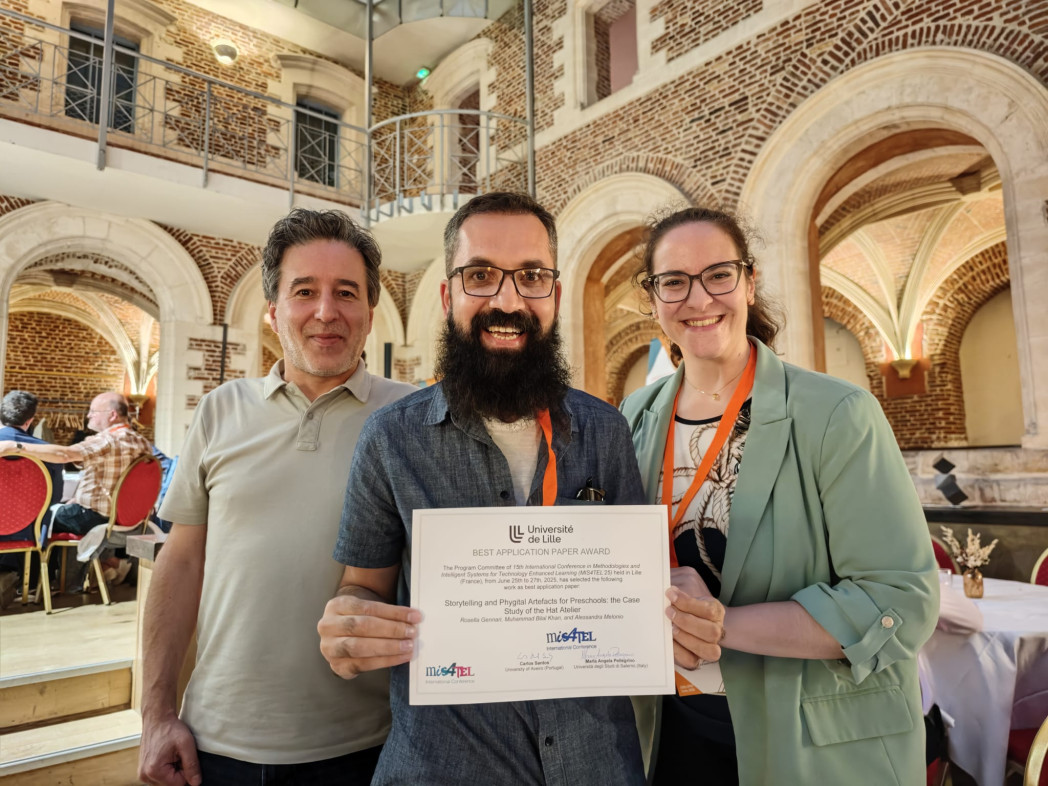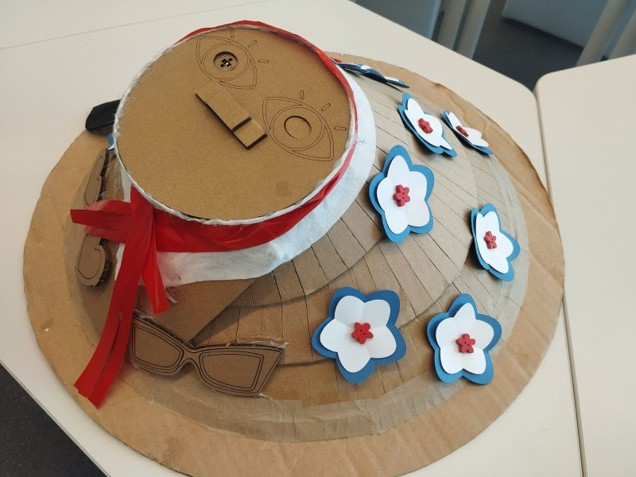When Digital Meets Tangible: Recognition for unibz Phygital Storytelling
By Giulia Maria Marchetti

Storytelling has long been a powerful tool for early childhood education – but what happens when we blend traditional storytelling with interactive, screenless technology? That question is at the heart of a project that has just earned international acclaim. Bilal Muhammad Khan, PhD candidate at our Faculty of Engineering, was awarded the Best Application Paper at the prestigious mis4TEL 2025 Conference (Methodologies and Intelligent Systems for Technology Enhanced Learning), held in Lille, France.
The award-winning paper, co-authored with Rosella Gennari, professor of Human computer interaction at unibz, and Prof. Alessandra Melonio (Ca’ Foscari University of Venice), explores how phygital artefacts – hybrid objects combining physical materials with embedded digital technologies – can be used in preschool storytelling activities. Their case study involved 41 children and their teachers and focused on a storytelling scenario centred around “phygital hats”: wearable artefacts enhanced with programmable electronics that respond to interaction through light, sound, or movement.
"This work is part of my PhD project, which aims at creating a toolkit that empowers teachers to build these artefacts easily and integrate them into classroom storytelling", explains Khan. “We want to make the learning experience more engaging, more interactive and more imaginative for young learners.”

The study shows that these artefacts, designed without screens, support head-up, social engagement and allowed children to narrate stories by doing. Children not only interacted with the hats, triggering reactions with buttons, sensors and sounds, but were also encouraged to imagine and co-design future artefacts. One child envisioned a nightcap that plays lullabies when a button is pressed; another imagined a headpiece for stamping and creating tattoos. These imaginative contributions were then analysed to extract design lessons for future tools. The study also identifies key design takeaways for early childhood interaction with technology, such as the importance of sensory feedback, repetition and guided play.
The project was received with great enthusiasm at the conference: “People were fascinated not only by the results, but also by the possibilities this study opens up for designing educational technology with and for children. Our artefacts can also be adapted for other learning environments, such as arts or humanities classrooms, and across various age groups, making them precious allies of school teachers”, concludes Khan.
Related people: Muhammad Bilal Khan, Rosella Gennari